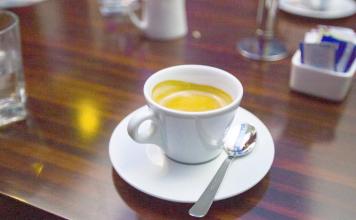Does it matter if the coffee machine takes longer to extract and the caffeine is more?
China Coffee Network
Making a perfect cup of Italian Espresso or Cappuccino coffee requires the help of a special coffee machine. And the machine that makes this coffee is the espresso machine. The machine uses 9 atmospheric pressure and 90 degrees Celsius steam to rapidly extract 30 milliliters of strong coffee liquid in a short time of 24 seconds. Features: Italian coffee machine can be divided into semi-automatic and fully automatic. To put it simply, a semi-automatic coffee machine is an Italian coffee machine that needs to be ground and pressed by itself. The quality of the coffee will change depending on the person who operates it. Full automaton from grinding to coffee is completed automatically, the quality of each cup is more balanced, but the taste is slightly inferior to the semi-automatic espresso machine. Palate: with the cohesion of fragrance and taste, caffeine intake is greatly reduced. Italian Bezerra semi-automatic commercial coffee machine
To put it simply, the concentration ratio of solute in two solvents is fixed under certain conditions.
If you do a simple extraction (I mean shaking and shaking in the separation funnel), there must be a lot of residue in the original solution. So, in order to save the extractant and reduce the cost of buying this thing, the following is used
The way caffeine is extracted in college is not simply oscillated with a liquid separation funnel.
But with something called a Soxhlet extractor (so I'd say it must be because of the different extraction methods)
Coffee beans in the processing process will be mixed with some impurities (twigs, small stone grains, etc., especially in dry coffee beans), some stunted coffee beans will also affect the quality of the whole batch of coffee. According to the altitude of the coffee planting area: generally speaking, the high altitude area usually has a large temperature difference and plenty of sunshine, and the coffee planted has a long growing period, a relatively rich flavor and a better quality. Coffee appreciation describes the characteristics and flavor of local coffee, the most commonly used are the following aspects: a, body refers to the thick, thick texture of the coffee after the entrance. B, acidity, this acid is different from the sour taste of our daily fruits. It is used to describe the bright, fresh and refreshing taste of coffee. Some famous Arabica coffee beans are loved by coffee lovers because of their bright "sour" characteristics. C, bitter bitterness is one of the most obvious characteristics of coffee. The main factors that affect the bitterness are: variety (Robbas is more bitter than Arabica), origin (some coffee products are more bitter, such as Sumatra and Java, Indonesia, etc.); baking degree (deeper roasting is more bitter than shallow roasting); caffeine content (the higher the caffeine content, the more bitter it will be); the extraction time (the longer the extraction time, the more bitter). D, sweet sweet aftertaste is the quality of some good coffee, generally speaking, no one likes "bitter", but the "sweet" and "sour" in the aftertaste is what many people pursue. E, aroma refers to the most obvious characteristics of coffee after brewing, including: caramel, fruit, flower, grass and so on. F, flavor refers to the overall feeling of aroma, sweetness and mellowness. G, winy) Coffee from some places has a wine-like taste, which is essentially a combination of sour taste and high mellowness. In addition to the appearance and size of coffee, cupping is the most important link in the evaluation of coffee. The mainstream tool for cup testing is usually a French filter press, which is carried out by professionals. The method is as follows: a, put the freshly roasted and ground quantitative coffee powder into a wide-mouthed cup and smell its dry aroma (dry fragrance); b, then pour it into boiled water at a suitable temperature (about 95 °C) and smell its wet aroma (wet aroma); c, then use a cup spoon to pick up some coffee solution and vigorously inhale the mouth (the coffee solution should be spread as far as possible), carefully identify the original flavor of the coffee, and then spit out the coffee D, wait until the temperature of the coffee naturally drops to room temperature before making the final taste.

Important Notice :
前街咖啡 FrontStreet Coffee has moved to new addredd:
FrontStreet Coffee Address: 315,Donghua East Road,GuangZhou
Tel:020 38364473
- Prev

Description of Flavor of Coffee beans treated with Red Wine
In addition, some containers are similar to red wine fermentation plugs or one-way exhaust valve devices through which carbon dioxide can be discharged to control the air concentration in the container. At this point, the coffee fruit in the container is fermented with acetic acid, the bean flavor is relatively bright and clean, with citric acid flavor Sasa described in the competition: choose Ray of Columbia Cloud Manor (Las Nubes)
- Next

Introduction to the variety of grinding degree of Italian espresso extraction method time flavor description treatment method
Italian concentration A single serving of Italian concentrated cup is usually only 25ml-35ml. According to the length before and after the extraction stage and the amount of product, it can be divided into extra strong Ristretto, double Italian doppio/double, long Italian Lungo and standard Normale Espresso. After these Italian nectar is done, add extra water to turn it into an American coffee Americano. So just...
Related
- What is the meaning of lactic acid fermentation with coffee bean treatment?
- How to judge the state of foam by sound?
- How does the latte pull out the unicorn pattern? Come to get for a little trick to improve the flower pull!
- Will flower pulling affect the taste of the latte?
- Do you know the history of coffee?
- The difference between honey treatment and sun washing what is raisin honey treatment?
- What kind of milk can a novice use to make coffee foam to keep the foam longer? The correct method and skills of milking tutorial sharing
- Why do washed coffee beans taste sour? Flavor characteristics of washed Coffee
- Introduction to the skill of how to practice the size and height of water injection around the circle of hand-brewed coffee
- How do beginners practice coffee flower drawing from scratch?

